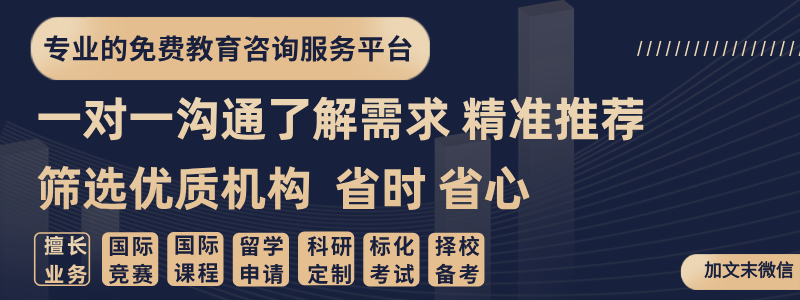本文目錄
√Phloem and xylem structure
1.1 Phloem
1.2 Xylem
1.3 Stem and root
√Uptake of mineral ions
√Uptake of water
√Xylem transport
√Phloem transport
01Xylem and phloem structure
在進入正題之前,讓我們(men) 先快速複習(xi) 一遍葉子的大致結構:

(Source: Google)
| Cuticle | 葉子最上層的蠟防止過多水分流失 |
| Upper epidermis | 和cuticle一樣幫助防止水分流失 |
| Palisade mesophyll | 有很多chloroplasts負責進行光合作用 |
| Spongy mesophyll | 騰出空間進行氣體交換 |
| Stomata | 換氣孔 |
| Guard cells | 控製著換氣孔的閉合 |
以上是MYP生物會(hui) 覆蓋的內(nei) 容,接下來的vascular bundle才是重點: Vascular bundle可以理解為(wei) 兩(liang) 組挨在一起裝著不同東(dong) 西的管子的集合體(ti) ,一組是xylem,一組是phloem。
1.1 Phloem
- 負責雙向(向上&下)傳送養分也就是所需要的organic compounds比如糖和氨基酸
- 有著連接著兩壁的sieve plates(可以理解為平的大漏勺),起到支撐和分流的作用
- 兩個sieve plates之間有著companion cell,有著很多mitochondria來生產ATP並負責儲存營養再傳送至phloem

Phloem的大致示意圖⬆ (Source: Google)
1.2 Xylem
- 負責將水和礦物質單方向向上從根部輸送到葉部
- 有著螺旋或圓環結構的lignin(可以理解為一種堅硬的結構材料)來支撐著xylem防止內部壓力過大而導致變形
- Xylem wall為了能夠將水分傳輸到葉子中有著一些銜接的小缺口所以不是完全閉合的
這邊給大家整理了一下phloem和xylem的區別⬇
| Xylem | Phloem | |
| Transport | Water & Mineral | Organic compounds(e.g. sugar/amino acid) |
| Direction | Unidirectional | Bidirectional |
| Wall | Contains gaps/pits | Complete |
| Structural charac-teristic | Helical/ring-shaped Lignin | Sieve plate & companion cells |
| Tissue | Dead | Alive |

Phloem和xylem的對比圖⬆ (Source: BioNinja)
1.3 Stem and root
剛才在葉子的橫截麵示意圖中我們(men) 看到xylem的位置是在phloem之上的,但其實在stem和root的位置也是不一樣的。IB要求我們(men) 能夠分清楚哪個(ge) 是stem哪個(ge) 是root:

大致示意圖:左邊stem右邊root (Source: Google)


顯微鏡照片:上邊stem下邊root(Source: IB Study Guide)
很多同學會(hui) 覺得root中的xylem更好記一些因為(wei) x的形狀更容易聯想到xylem 。
02Uptake of mineral ions
植物的所有養(yang) 分都是通過根部的root hair cell進行active transport吸收,再被傳(chuan) 輸到需要的地方。

是root hair cell ⬆不是根哦 (Source: Google) 用active transport的原因之一,是因為(wei) 在一般情況下root hair cell內(nei) 的mineral ions的濃度是大於(yu) 土壤中的濃度的,所以為(wei) 了將更多的mineral ions吸收進植物就隻能通過active transport而不是diffusion。 第二個(ge) 原因是因為(wei) 組成cell membrane的phospholipid bilayer有polarity,所以任何polar molecules(包括mineral ions)都無法直接通過,而是需要channel proteins的幫助。
整體(ti) 過程隻有兩(liang) 步:
a. Use of proton pump to create a proton gradient
Proton pump是一種active transport的手段,在這裏會(hui) 用ATP把儲(chu) 存在root hair cell的vacuole中的protons也就是H+ ions泵出細胞外。這樣做會(hui) 產(chan) 生一種外高內(nei) 低的proton gradient,讓mineral ions順著gradient進入細胞內(nei) 。
b. Use of channel proteins to take in the mineral ions
但就像我們(men) 剛才提到過的那樣,mineral ions are polar molecules,所以需要channel proteins。H+ ions會(hui) 和其他的mineral ions一同通過channel proteins回到細胞內(nei) 。
03Uptake of water
當越來越多的mineral ions湧入細胞內(nei) ,細胞內(nei) 的ion concentration會(hui) 變得比細胞外的高,換句話說就是water potential變低,導致水分子通過osmosis進入細胞內(nei) 。水會(hui) 向著high solute concentration的區域移動。

水流向示意圖⬆(Source: Google)
一旦進入根部後會(hui) 通過兩(liang) 種方式進入xylem:
a. Symplastic route
通過cytoplasm和連接著兩(liang) 個(ge) 細胞的小通道plasmodesmata進入xylem
b. Apoplastic route
通過cell wall和cytoplasm進入xylem
水無法通過casparian strip所以會(hui) 回到endodermis的cytoplasm中

根部細胞橫截麵示意圖⬆ (Source: Britannica)
根部水流動的整體(ti) 順序為(wei) :Root hair → Epidermis → Cortex → Endodermis → Pericycle → Xylem
*擋住水分的casparian strip在endodermis中
【曆年真題1】2016 NOV P1

【答案&解析】
我們(men) 可以先把給出的四個(ge) 選項根據內(nei) 容分為(wei) 兩(liang) 組:
A&C → Decrease/Increase movement of water from soil into the root
B&D → Absorption of water with a lower/higher solute concentration
B&D講的是根部細胞內(nei) 的變化,但土壤中鹽分的增加並不會(hui) 導致細胞內(nei) solute concentration有變化所以可以排除掉。
水會(hui) 從(cong) low solute concentration流向high solute concentration的地方,所以當土壤中的鹽分濃度增加後,流向根部的水不但不會(hui) 增加,甚至可能會(hui) 從(cong) 根部流回土中。 所以這道題應該選A。
04Xylem transport
植物在白天進行光合作用時會(hui) 將二氧化碳吸收並排出氧氣。我們(men) 將這種氣體(ti) 的交換稱之為(wei) gas exchange,而transpiration(蒸騰作用)是gas exchange的必然結果。
Transpiration指的是水分子從(cong) 植物莖葉中流失的過程:The loss of water vapour from the stems and leaves of plants(IB原話)。
在解釋transpiration之前讓我們(men) 再來簡單複習(xi) 一下我們(men) 學這段需要的chapter2中提到過的水的特性:

水分子就是這樣的⬆(Source: BioNinja)
水分子具有polarity(極性),就像和磁鐵一樣有著兩(liang) 極(+)(-),會(hui) 吸引極性分子,所以會(hui) 很容易和水分子以及其他分子“粘”在一起。
Cohesion:
- 相同的分子粘在一起
- 水分子之間會形成hydrogen bond
Adhesion:
- 不同的分子粘在一起
- 水分子會和其他polar molecules (極性分子)粘在一起
大概就像這種感覺:

(Source: Google)
植物在進行光合作用時,光能被葉子吸收後轉化為(wei) 熱量從(cong) 而提升葉子內(nei) 部的溫度,將水變成水蒸氣。交換氣體(ti) 時為(wei) 了保證氣體(ti) 的進出,葉子上的stomata(氣孔)會(hui) 打開,也就造成了水蒸氣的流失。 隨著葉子的水分流失,更多水會(hui) 從(cong) 根部被吸收並通過xylem被吸上去以補充被蒸發的水分。
因為(wei) 根部的水一直都會(hui) 多於(yu) 葉子的水,所以會(hui) 形成一個(ge) pressure gradient:根部壓力>葉部壓力。
因為(wei) 水有著adhesive和cohesive properties,所以水分子會(hui) 隨著這個(ge) gradient被不斷往上拉: Adhesion → 水分子粘著植物細胞中的celluloseCohesion → 水分子粘著水分子

Transpiration整體(ti) 流程⬆ (Source: Google)
植物的transpiration經常出現在p2 part B大題中:
【曆年真題2】
2020 NOV P2

【答案&解析】
這道題有4分,所以隻要寫(xie) 出相關(guan) 的四點就可以。重點:processes 回答所有part B問題的時候我們(men) 可以按照where how why這三點進行回答:下橫線代表著特定的詞,如果沒有寫(xie) 出下橫線上的詞的話就拿不到這一分哦。
Where:
- In xylem vessels [1]
How:
- Transpiration generates pulling forces [1]
- Transpiration is loss of water vapour from leaf [1]
- Tension generated when water evaporates from cell walls [1]
- Flows from roots to leaves [1]
Why:
- Cohesion in water due to hydrogen bonding [1]
- Cohesion remains continuous [1]
【曆年真題3】
2017 NOV P2

【答案&解析】
這是一個(ge) 8分的大題所以隻要回答出相關(guan) 的八點就可以。 根據題目我們(men) 可以把答題的重點分為(wei) 兩(liang) 大塊:
Water uptake [4]Where :
- Root hair cells absorb water [1]
How:
- It is absorbed by osmosis [1]
Why :
- Solute concentration inside the root is higher / water potential is lower than in the soil [1]
- Due to active transport of mineral ions into the root [1]
Water transport [4]Where:
- In xylem vessels [1]
How:
- Flows from roots to leaves [1]
Why:
-
Due to pulling force/transpiration pull [1]
-
Cohesion/hydrogen bonds between water molecules [1]
-
Evaporation of water from leaf cell walls [1]
-
Adhesion of water to leaf cell walls/cellulose creates tension [1]
✨注意:在這道題中如果想要通過adhesion得分的話,必須要將其與(yu) creating tension聯係起來,不然不算分 除此之外還有兩(liang) 個(ge) 得分點是:
-
Lignin in xylem walls resist tension [1]
-
Movement of water in xylem is a passive process [1]
05Phloem transport
就像剛才提到過的一樣,phloem是營養(yang) 物質的傳(chuan) 輸。在這個(ge) 過程中,營養(yang) 物質會(hui) 從(cong) 生產(chan) 的地方被運送到需要的地方,我們(men) 管植物中的這兩(liang) 塊區域叫sources和sinks。
Sources有機物比如糖和氨基酸從(cong) sources通過active transport進入phloem sieve tubes。 Sources的其中一個(ge) 例子就是葉子,因為(wei) 葉子中的綠葉素會(hui) 進行光合作用而產(chan) 生糖。
Sinks有機物會(hui) 從(cong) phloem sieve tubes進入sinks,也就是需要營養(yang) 的地方,比如根部。 運輸機製可以理解為(wei) 由營養(yang) 物質濃度的增減而造成的hydrostatic pressure(靜水壓力)的變化:

Phloem transportation整體(ti) 流程⬆ (Source: Google)
a. Active transport of organic molecules from source to phloem
- companion cells的作用是輔助物質的運輸
- 有機物進入phloem的順序:source → companion cell → phloem
- phloem中的有機物濃度比source中的高所以需要active transport
b. Water potential in phloem decreases causing water to be drawn from xylem which increases hydrostatic pressure
-
Solute concentration increase = water potential decrease
- 水會流向水少的地方
- 所以xylem中的水分會自然而然通過osmosis進入phloem
- 更多的水進入phloem後hydrostatic pressure會增加,導致液體流向sink
c. Active transport of organic molecules from phloem to sink
- Sink作為儲存營養的地方濃度比phloem高所以需要active transport
d. Water potential in phloem increases causing water to move back into the xylem
- 和剛才的同一個道理:compound concentration decreases = water potential increases
- 所以水又回到xylem去了
【曆年真題4】
2018 MAY TZ2 P2

這裏增加一個(ge) 新的知識點:Phloem loading = 有機物從(cong) source到phloem的過程
和剛才根部water uptake的方法很像,都分為(wei) 兩(liang) 條不同的路線,但是這次沒有casparian strip的阻礙而且不是在根部⬇

(Source: Oxford IB textbook)
【答案&解析】
不同植物會(hui) 根據自身條件而選擇不同的進入方法所以回答這道題時這兩(liang) 種route都要寫(xie) :
How:
- Active transport [1]
- Organic molecules e.g. sucrose moves by apoplastic/symplastic routes [1]
- Movement through plasmodesmata [1]
- Loading at source into companion cells [1]
Extra:
- High solute concentration in phloem leads to water movement by osmosis [1]
【曆年真題5】
2018 MAY P1

【答案&解析】
題目中的重點是sucrose transport,也就是有機物而不是水。根據此條線索我們(men) 可以把xylem和cortex給排除掉,所以最終答案為(wei) D。
最後的小總結
本次推文帶著大家過了一遍IB 生物chapter 9中xylem和phloem相關(guan) 的內(nei) 容和一些曆年真題!
水分和養(yang) 分的傳(chuan) 輸經常出現於(yu) paper 2中的part B。Part B中有很大一部分是流程題,要求我們(men) 不僅(jin) 要把某一個(ge) 流程寫(xie) 出來,還要解釋其背後的原理(比如這次的transpiration)。
在時間充足的情況下,建議把所有和題目相關(guan) 的知識全部寫(xie) 上去,寫(xie) 多總比寫(xie) 少好!(orz你永遠不知道做rubric的考官會(hui) 不會(hui) 突然心情好覺得你有踩到分)
另外要注意的是剛才在曆年真題中出現的command terms,比如explain,outline,describe等詞。每個(ge) command terms所對應的得分都不同,所需要寫(xie) 的內(nei) 容會(hui) 按照這個(ge) 順序逐漸增加 :outline<describe<explain。
很多時候定義(yi) 也算分數所以一定要給出題目中出現的專(zhuan) 業(ye) 用語的定義(yi) !















評論已經被關(guan) 閉。